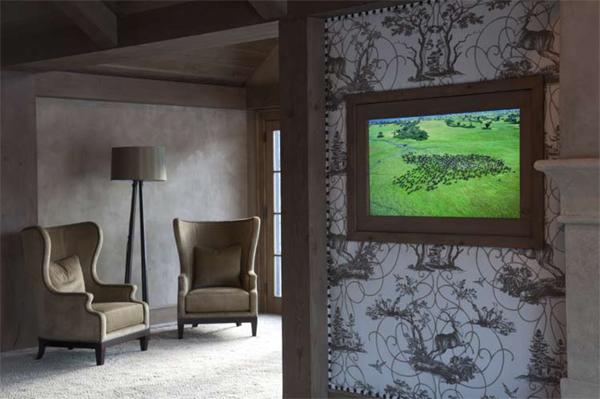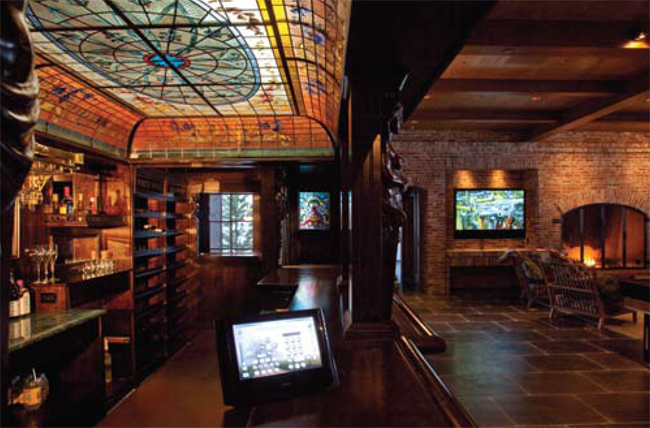|
Technology and Design: Improving our Built Environment
Technology has always been important to designing and building a home, and the advances in technology make it more vital than ever today. Designs that incorporate technology are nothing new. Architects do it every day, and responding to technology is part of the tradition of architecture. In fact, the term architecture is common in the information technology world as well, regarding electronic structures. This aspect of technology has progressed to where it requires considerable expertise and deserves special attention by experts when it comes to your home. This shift has been coming for decades, but now it is here in a big way because it adds a great deal of comfort for little expense. Designing for technology is important because electronics play a pervasive (and possibly an invasive) role in today’s homes. Home architecture without proper electronic architecture is dated before it is occupied. Home Media is uniquely able to provide the perspective, expertise, and experience to produce the best overall design.
Rooted in Tradition Designing for changing technology is a tradition. Over 2000 years ago, De Architectura, 10 books compiled by a Roman named Vitruvius, imparted the principles: firmitatis, utilitatis, and venustatis. These terms translate roughly as durability (or firmness), utility (or commodity), and beauty (or delight), depending on the source. Regardless, it is still widely accepted that these three principles must be satisfied for a building to be considered good. These are the very principles of today’s DQI (Design Quality Indicator) tool. Home media designed the Home Media way stands up robustly and remains in good condition. Relevant to these traditional design principles, it is useful and functions well, and it pleases and raises spirits. Over 20 years ago, Witold Rybczynski, a highly accomplished and regarded professor of architecture, wrote Home: A Short History Of An Idea. His history of domestic comfort is a development of our idea of home. “Domestic wellbeing is a fundamental human need,” he asserted. Yet many contemporary architects and interior designers, and to even a lesser extent, builders, give slighter consideration to matters of comfort as it is related to technology than his assertion would lead you to expect. Technology plays a proven role for “domestic well-being.” Statistics show that people heal faster in well-designed hospitals and learn more in well-designed schools, so wouldn’t it stand reason that a well- designed home is more comfortable? Electronics now have an effect on every building system. Even our local cable company is in the midst of the analog sunset; all is digital. Electronics and technology are very much a part of domestic lifestyle and comfort, and it is what we do at Home Media. In his same work from 25 BC, Vitruvius described the many innovations made in building design to improve living conditions. Foremost among them is the development of the hypocaust, a type of central heating. That was the technology of the time. Today, this is accepted as a matter of course and you have a mechanical consultant/engineer on the team. In 1983, Rybczynski wrote another book, Taming the Tiger: The Struggle to Control Technology. In it he examines various historical examples of attempts to control or even roll back technology such as the Luddites and Maoist China. Home Media tames the tiger every day, sifts out what doesn’t enhance a home and makes available what does. As an example, Vitruvius instructed how to design buildings to maximize heating fuel efficiency. Home Media instructs how to obtain LEED points, how to comply with EnergyStar, and how to reduce carbon footprint through the coordinated use of electronics. It’s not that different, but when looked at relative to the existing established system that has been maturing since craftsmen formed guilds, it can cause resistance. However, it is just change and a natural progression: solving, resolving and helping are what we do. So to follow this progression, firmness, commodity, and delight are the three principles that in synthesis make the perfect building. Then you add comfort for domestic wellbeing to make it a home, and finally electronic information technology is now a basic modern necessity. Then, it stands to reason Home Media should be a part of envisioning and completing a home. Simplify, but Not Simplistic “Performance Made Simple” has always been our trademark: simplify, but not simplistic. Having designed over a thousand home electronic systems for over twenty years, I have never had Home Media can best be understood through the lens of designing. This extends to designing the look and feel of the user experience, the industrial design of the products themselves, the system design, and even things like how the buttons on the wall are laid out. As an example, a lighting control system by a lighting designer or electrical contractor can consolidate the things you do with lots of buttons in less space, or can create scenes and other global commands. But, these systems do not integrate and eliminate things, and really do not simplify. That’s what we do. Poor design quality wastes an enormous amount of money and time. Academics have estimated that between 5-7% of all construction costs are attributed to deficiencies in design, leading to “rework.” How much of that, especially in recent times, is due to neglecting or misapplying information technology? By simply defining ubiquitous critical project elements, we tackle the deficiencies. This reduces costly project delays and leads to reduced project cost, decreased development time, minimal change orders, shorter procurement time, reduced operating costs, lower capital expenditures, smaller energy costs, and increased asset value. It also reduces occupant and user complaints, improves functional efficiency, and enhances quality of life. On time and on budget is not enough. Demand “Performance Made Simple,” and demand what it is simple for you. It may seem innovative now, but it won’t be in 2030. |
[bannergarden id=”2″] |
| [bannergarden id=”3″] | |
| [bannergarden id=”1″] |

 someone come to me and say, “I want a really complicated system.” Invariably, they do say, “we just want to keep it simple.” Our perspective always starts with the user’s experience. Design is an incredibly important part of that user impression. Beautiful products are important, but perhaps the most important decisions are not the things you do, but the things you decide not to do. Minimalism is good. We don’t believe in doing things just because we can. We believe in making incredibly careful selections to eliminate complexity.
someone come to me and say, “I want a really complicated system.” Invariably, they do say, “we just want to keep it simple.” Our perspective always starts with the user’s experience. Design is an incredibly important part of that user impression. Beautiful products are important, but perhaps the most important decisions are not the things you do, but the things you decide not to do. Minimalism is good. We don’t believe in doing things just because we can. We believe in making incredibly careful selections to eliminate complexity.